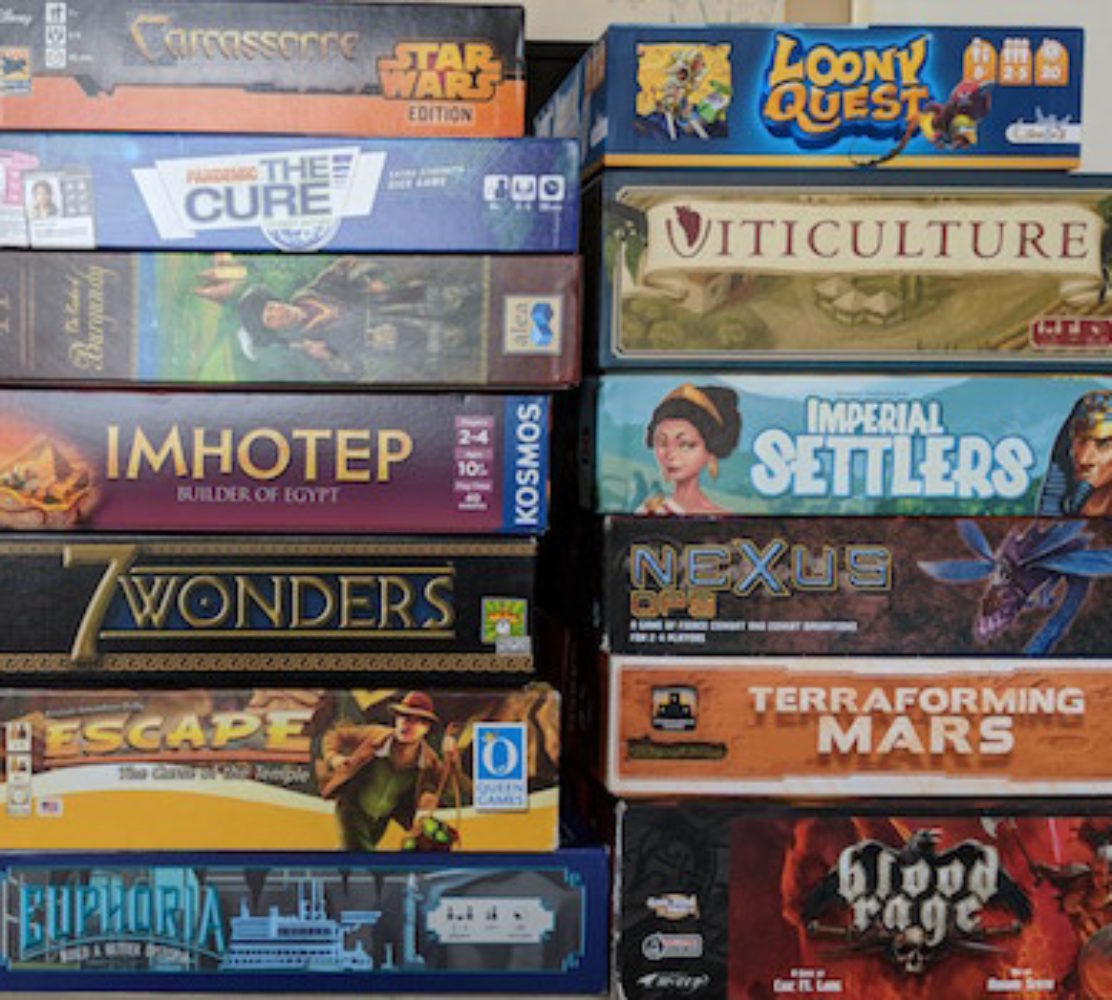Now available for your listening and/or viewing pleasure: my Gen Con 2023 Recap with Amanda McKnight! We livestreamed this and it’s been edited and available in video and podcast formats. Embeds below:
boardgamegeek.com
365 Day Board Game Challenge
Happy New Year, friends! I’m doing a 365 Day Board Game Challenge. Every day in 2020 I’m posting about #boardgames: a blog, a photo, a video, a podcast, etc. As long as it’s about a #boardgame, I’ll post it with the #gameaday and #2020challenge hashtags. Join me! pic.twitter.com/8JqhlknzwK
— Ruel Gaviola 🎲 🇺🇸 🇵🇭 (@RuelGaviola) January 2, 2020
November Writing Challenge Day 17: Highlights of the Week
I’m blogging every day this month. Some will be game-related, but this challenge is different than my most recent play-a-game-and-blog-about-it challenge. I’m writing a single post every day: no topic guidelines, with some posts being a collection of random thoughts. Click here to read yesterday’s post.

Three highlights from my last week:
- Got to hang out with Meeple Lady and Chris at a local game night. They were traveling back home and I was thrilled that they stopped by for dinner and a coupla games. We played Q.E., which has been a big hit with all of my friends. Check out my Instagram post for more info on Q.E., which is one of my favorite games of 2019.
- Continued my Clank! Legacy: Acquisitions Incorporated campaign. We’re halfway through and it’s been a blast. Read my spoiler-free thoughts here.
- Had a wonderful brunch with my family today. We don’t get together as often as I’d like to, but when we do it’s always a good meal highlighted by lots of laughter. I shared some old photos of me and my brothers that I’d scanned recently and everyone was cracking up over them. My stepdaughter, nephew, and nieces laughed at our clothes and haircuts while the rest of us marveled at how much my niece and nephew looked like my brothers. My parents love spending time with their grandchildren and it brings them great joy to see them growing into such good young people.
On Tour
Here’s the link to my review of On Tour, a roll-and-write game from boardgametables.com.
Get in the Van: On Tour Takes Your Band Rolling And Writing Across America https://t.co/R4OvAyqt6r
— G33k-HQ (@G33kHQ) October 19, 2019
The Day in Gaming, September 30, 2019: Baseball Highlights: 2045
I’m posting about a game every day in September! Here’s a link to yesterday’s post.
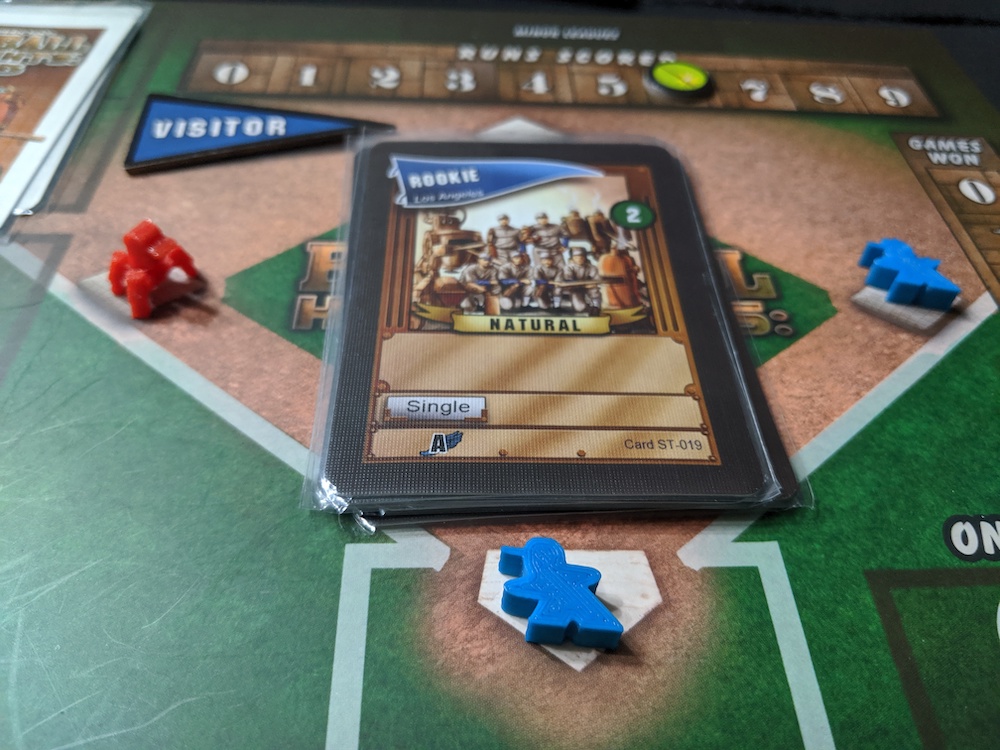
With my hometown Dodgers gearing up for the postseason after winning the NL West for the seventh straight season, today was the perfect day to play Baseball Highlights: 2045.
The game is one of those 2-4 player games that plays best with only two players. I love the feeling of going head-to-head against my opponent in Baseball Highlights; it’s like we’re both managing our futuristic baseball teams, trying to out-maneuver each other to score runs every game. Tonight I solo-ed the game, which is always a challenge since the AI starts off with a team full of powerful free agents while you slowly cull your deck of starter cards (rookies and veterans). By the way, the pieces you see in the photo above were 3D printed by my buddy Marlon. The actual game uses standard game pawns.
Designer Mike Fitzgerald did an outstanding job of incorporating the deck-building mechanism into the baseball theme. It’s remarkable that he distilled all of the action of a ballgame into a mere six cards that you play against your opponent.
I have a few of the expansions to BH: 2045 and while they add some new wrinkles to the game, the original base game is perfectly fine and you’ll log many hours playing it against your favorite baseball fanatic.
My nephew is one of those fanatics. He absolutely loves baseball and I enjoy seeing his passion for it. We’ve played BH: 2045 a few times when he’d visit and I gave him his very own copy for Christmas a few years ago. Although he’d rather play video games or an actual game of baseball these days, I’m glad that he’ll still play BH: 2045 with his Uncle Ruel. Maybe one day he’ll let me win.
The Day in Gaming, September 29, 2019: Pipeline
I’m posting about a game every day in September! Here’s a link to yesterday’s post.
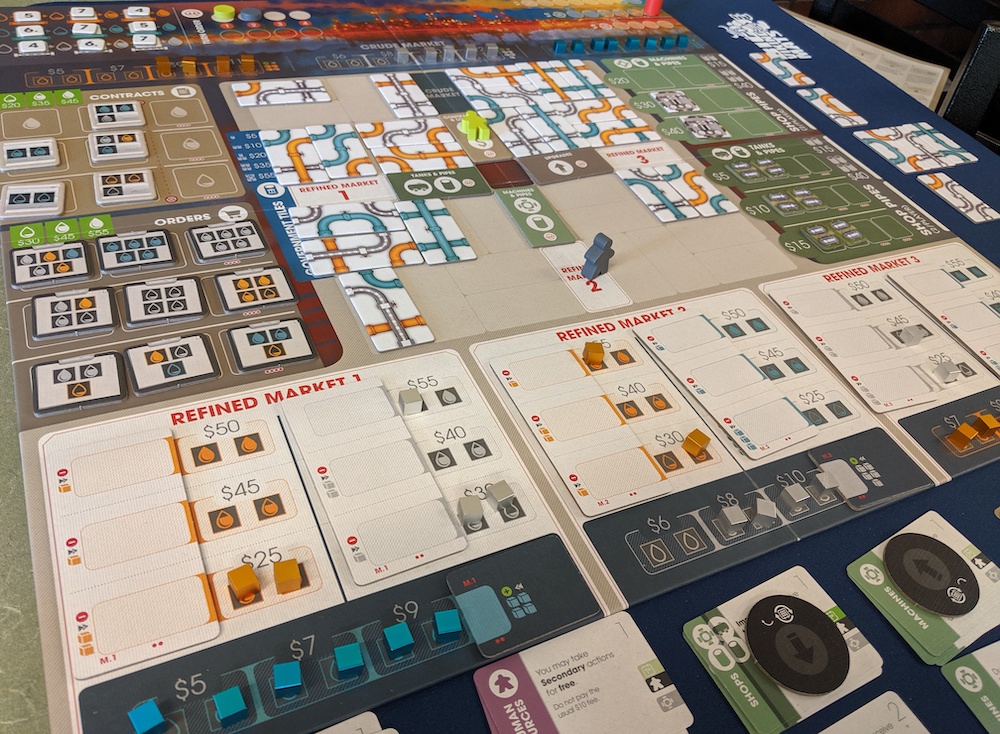
I’m now up to a half-dozen plays of Pipeline and it’s on my short list of best games of 2019. For a game that can be downright punishing I still find it enjoyable. The first time I played a few months ago with my friend Jose, I immediately asked for a rematch. It’s a game where you always feel like you can do better, no matter if you’ve won or lost.
After today’s game with Nick, I felt the same way. It was a particularly rough game for both of us; neither of us could get much going based on the valuation cards for the game (orders and contracts, all of which were tough to complete). We both wanted to play it again right away, but decided to play the relatively mild The Castles of Burgundy instead.
One of the criticisms I’ve read about the game is how it’s not very exciting during the last few turns since you’re just running your machine and pumping out that Black Gold. It actually reminds me of one of my other favorite (so far) games of 2019, Wingspan. Both give players fewer actions each round, with your final turns feeling semi-scripted.
I actually like this about Pipeline. The puzzle of the first half of the game is brutal and brain burny, as you attempt to figure out a way to get your oil refined and make that money. Once you get your engine humming you can just sit back and collect your dough.
The criticisms of the upgrades are fair; I’m not a fan of how you get to lock not only the stack of upgrades you chose that turn, but also another stack. It just feels punitive for the sake of being punitive.
Still, for a game that plays under in an hour for two players, it’s a remarkably deep and thinky experience that’s one of my favorites of the year.
The Day in Gaming, September 28, 2019: Blood Rage
I’m posting about a game every day in September! Here’s a link to yesterday’s post.
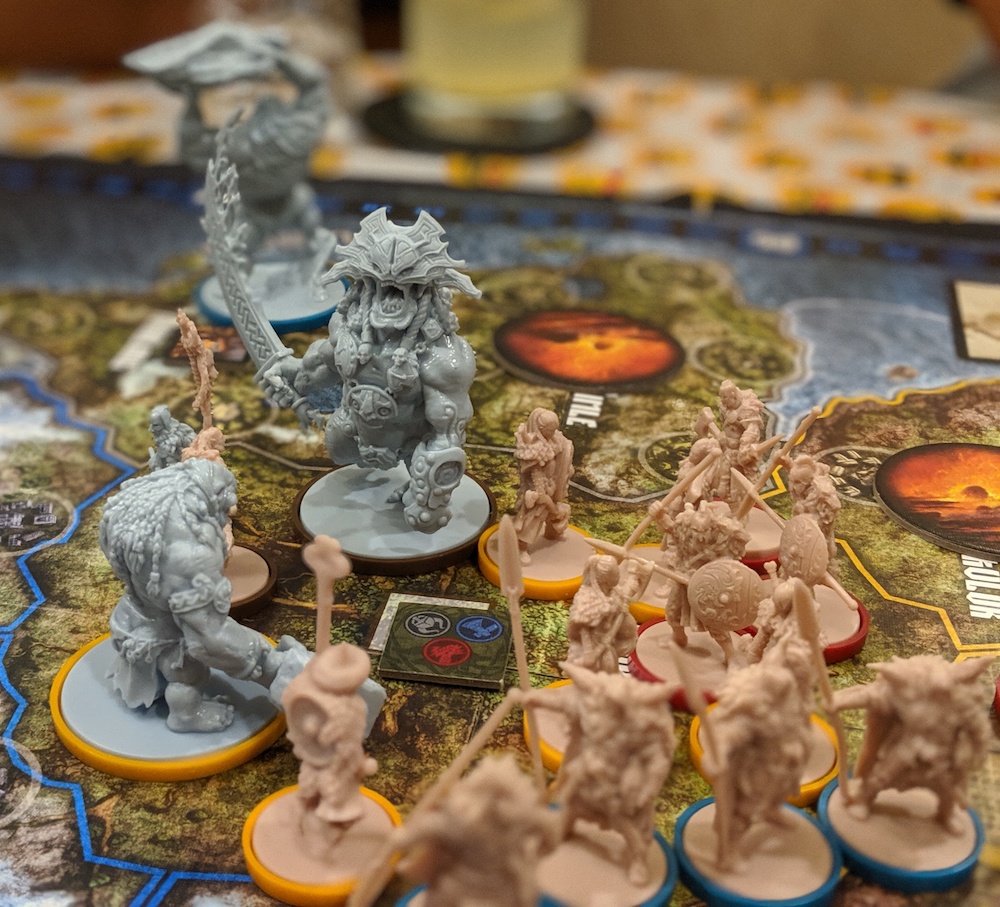
Today was a special day of gaming for me, since I was able to celebrate my friend Dave’s birthday. We’ve known each other nearly our entire lives and and actually longer than that: our mothers were friends before we were even born. I like to think that it was pretty much a given that we’d become friends. It never ceases to amaze me that I could be friends with someone for several decades.
It was a fun day celebrating Dave with family, friends, and board games. We ate a lot, enjoyed a few adult beverages, and had a lot of laughs. We ended the day with his choice of games: Blood Rage.
Or, as most gamers call it, BLOOD RAGGGGGGEEEEE.
It’s one of my all-time favorites. There aren’t many games that offer this epic of a tabletop experience in 90 minutes or less, thanks to an approachable and streamlined set of rules. From the mighty Viking theme to the deceptively smooth card play, Blood Rage always gets an enthusiastic response when it’s on the table.
Our group last night included two new players, both of whom picked it up fairly quickly. It’d been a while since I’ve played so I forgot a few rules (like the ability of monsters to invade for free immediately), but thankfully it didn’t affect game play. In the end, the Birthday Celebrant won easily and I couldn’t be happier … and I was already looking forward to a rematch.
The Day in Gaming, September 27, 2019: Medici: The Card Game
I’m posting about a game every day in September! Here’s a link to yesterday’s post.
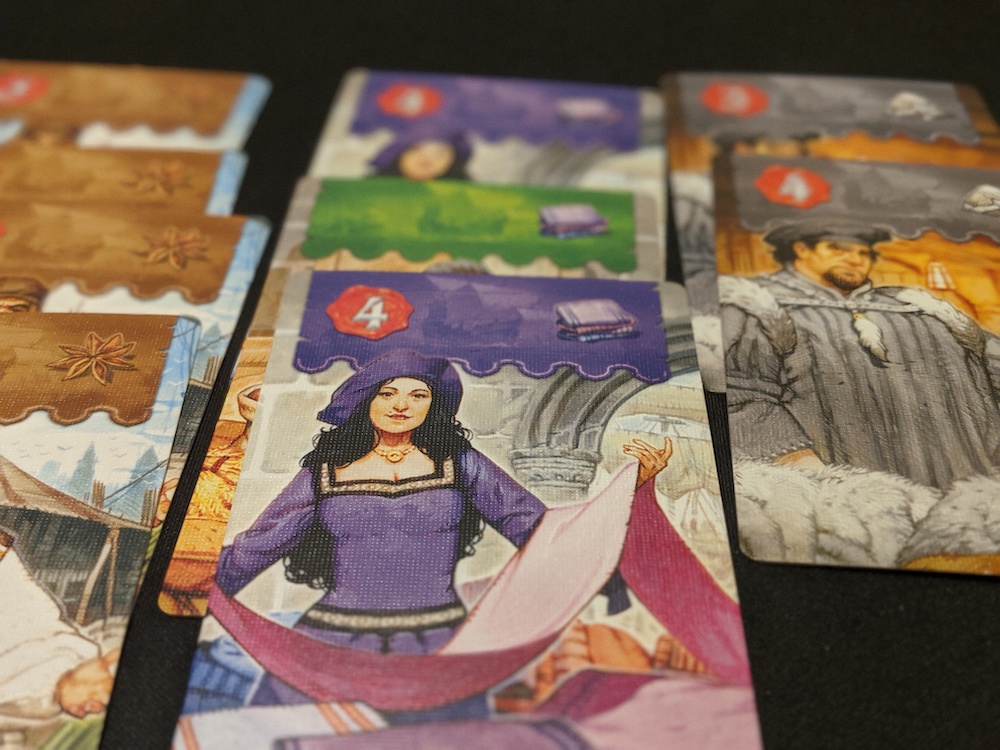
It looks like my September has been a celebration of Reiner Knizia’s catalog of games. I wasn’t planning it, but thanks to the fine tastes of my gaming buddies, I’ve played four of his titles this month: Ra, Samurai, Blue Lagoon, and Medici: The Card Game.
While Ra and Blue Lagoon were new to me, I’d played Samurai and Medici: The Card Game before. I’ve already talked about Samurai so let’s take a quick look at Medici: The Card Game.
The original Medici, like a few of Knizia’s games, use bidding as its main mechanism, with set collection used for scoring points. It’s an excellent game and the card game captures some of the flavor of the original, but replaces bidding with push-your-luck.
Like other Knizias, this is a streamlined game with tension on every turn. I love the use of push-your-luck as you try to collect all of the cards necessary to complete your different sets. While this isn’t a “deep” game per se, it sure is a lot of fun trying to see how far you can go to get the card or cards you want. Your draw is limited to three cards and at the very least you have to take the last card you drew.
I’d love to see more designers focus on games like the four Knizias I played this month. Each one has no variable player powers and some luck involved in game play, and you don’t have to go through pages and pages of rules to learn to play.
I’d rank Ra, Samurai, Blue Lagoon, and Medici: The Card Game higher than some of the latest board games that feature all of the extra mechanisms and what-not. Knizia’s games are so well-polished and offer an engaging tabletop experience for all types of gamers. Designers should learn a lesson from a master of game design: less can definitely mean more.
The Day in Gaming, September 25, 2019: Samurai
I’m posting about a game every day in September! Here’s a link to yesterday’s post.
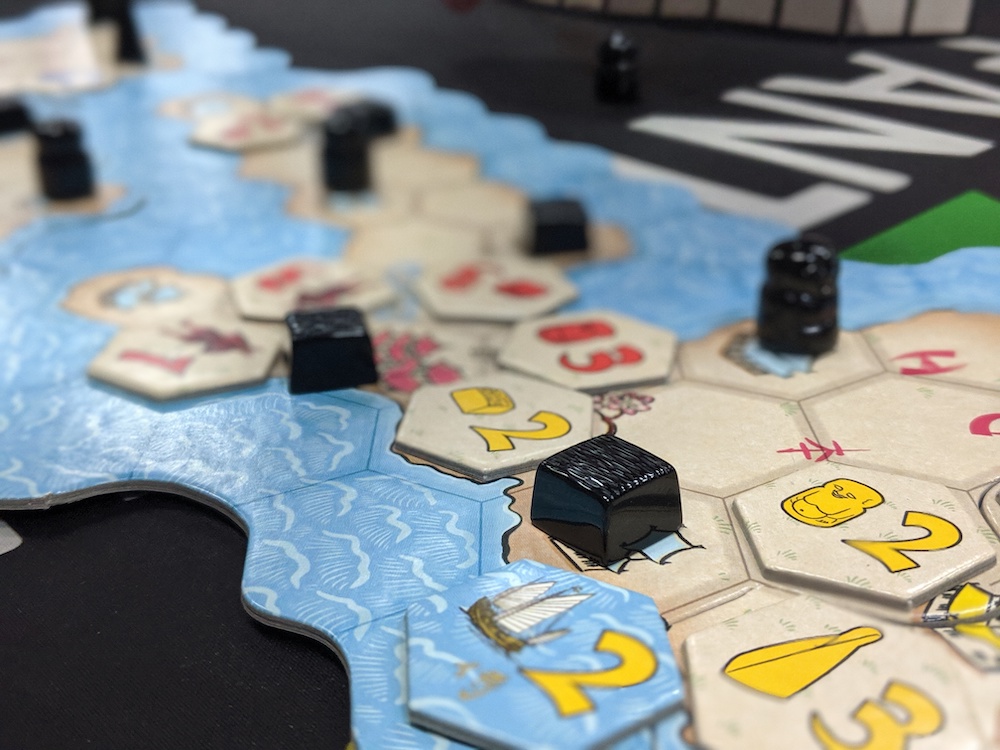
There are two things I’ve always loved about my main gaming group: 1. Everyone’s willing to play almost any kind of game, from the current hotness to obscure or classic titles. 2. There’s an unspoken rule that we try to play a game from each person who shows up.
Tonight was a perfect example. First, Daryl played his Lost Cities with Jin while I ate my super-late lunch. Next, we played Patrick’s Black Angel, which a bunch of us have been hyped to play. Then, we played my Jetpack Joyride, which I’ll be reviewing soon (spoiler alert: it’s a lot of fun), and Oscar’s Cartographers: A Roll Player Tale. Finally, we finished with Jin’s copy of Samurai, which seemed fitting to end game night with another Reiner Knizia game (Lost Cities being another one of his classics).
Samurai was one of the first games I played at this meetup four years ago when I was just getting into the hobby and even then it was an older game. Tonight proved to me that it remains one of my favorite Knizia titles.
At its heart Samurai is an abstract game in whichyou attempt to conquer ancient Japan using three factions; warriors, peasants, and priests are represented on the board by minis of helmets, rice, and Buddhas. It’s an area control game and the board is made up of hexagons that you place one of your faction tiles on; most tiles are numbered 1-4. It’s also a set collection game since you’re trying to own the majority of the three factions to win.
Like many of Knizia’s other games, Samurai has a relatively simple ruleset with a surprising amount of depth to it. You’re just choosing one of your five random tiles to place on board and when you surround a mini, you and any opponents add the strength value of your factions and the highest takes the mini.
The game ends when all of one mini (helmet, rice, or Buddha) is depleted. The player with the most majorities wins the game, with ties being decided by the number of minis you’ve collected.
I love how this area control game works because you can basically go anywhere with your tiles, but you’re also trying to set yourself up when a battle goes down (that is, when a mini is surrounded on all sides). There are two special tiles that really make the game interesting: first, one tile allows you swap minis. This one is hilarious because usually you can steal a mini from right under an opponent’s nose. The second tile allows you to re-use one of your tiles and this one comes in handy, particularly when you want to take another shot with your 4-value tile.
Samurai is an underrated gem of a game. It’s another one of those easy-to-learn, difficult to master games that I always enjoy and appreciate.
The Day in Gaming, September 24, 2019: Brass: Birmingham
I’m posting about a game every day in September! Here’s a link to yesterday’s post.
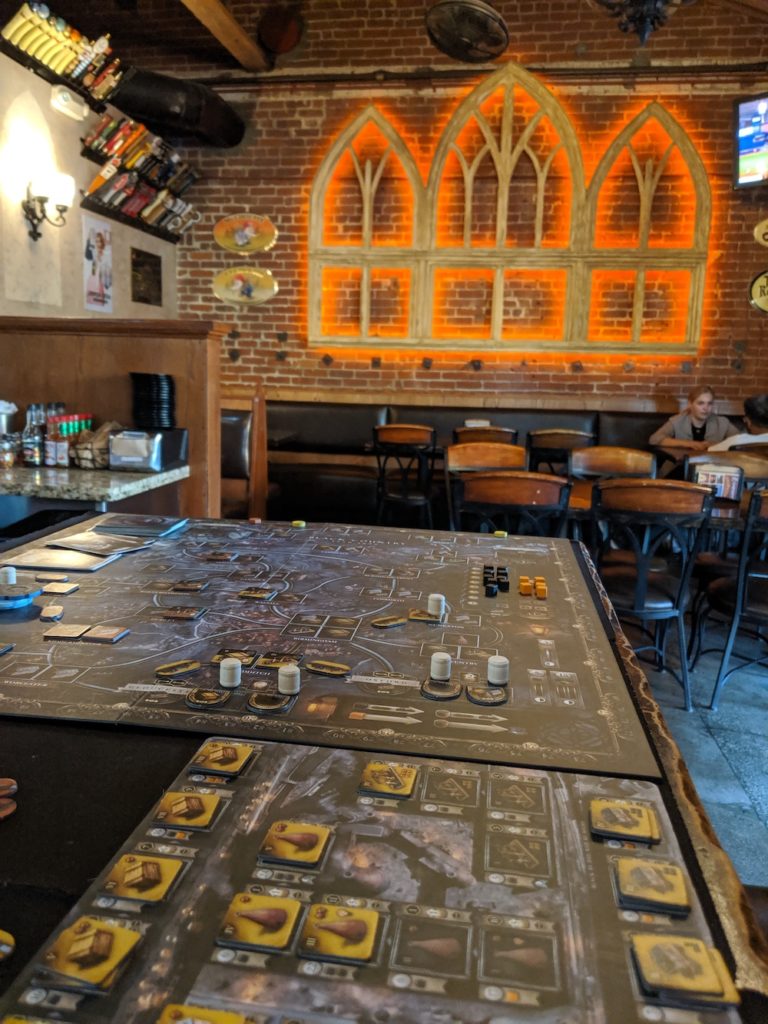
Tonight I got to play one of my favorite games, Brass: Birmingham. I’ve previously reviewed it on The Five By, so please click here to hear my thoughts on this heavy Eurogame.
I met my buddy Jake at Congregation Ale House in Pasadena for board games and beers. It was my first time at a Congregation (there are a few locations in different parts of L.A.) and I instantly fell in love with the place. Big game-friendly tables, good beer, and tasty pub food are a combination that I cannot resist.
The church-inspired decor is really cool, giving Congregation a sort of goth feel. The music was generally a mix of old and new rock, and the volume wasn’t obnoxiously loud, which is something I appreciate more with each passing year. It was the perfect setting for board games and beers.
It’d been a while since I played Brass: Birmingham and I forgot how much there is to the game. The basics are easy (take an action, discard a card), but the rules of consuming beer/iron/coal always trip up new and experienced players. Thankfully, Jake knows board games and was able to make sense of what I was trying to explain.
After our game I wanted to play Brass: Lancashire, which is closer to the original Brass game rules (Birmingham being its standalone sequel). Lancashire doesn’t have Birmingham’s funky beer rule, where you’re required to consume beer when selling certain items.
Speaking of consuming beers, Congregation Ale House is an outstanding choice for your next beer-centric outing. I had an excellent Russian River Blind Pig; it was a refreshing, citrusy IPA that reminded me why I still enjoy the occasional beer. It also reminded me that I need to visit Congregation Ale again real soon.

